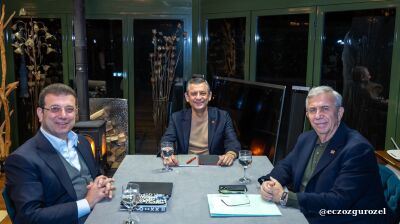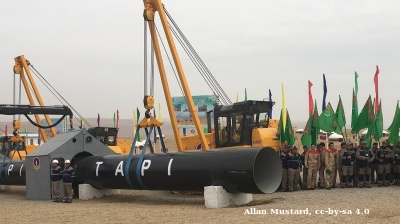It’s now been over a year since the Russian invaders were forced out of Sviatohirsk, but from the town’s appearance, you’d hardly know it.
Sviatohirsk nestles in a picturesque vale along the banks of the Siversky Donets river, which winds its way through Ukraine’s eastern Donetsk oblast. Long established as a resort town, Sviatohirsk boasts a collection of luxury hotels and summer camps, which more than doubled the town’s population in the summer months.
Restaurants and campgrounds, many still bearing signs advertising shashlyk barbecue and other traditional summer delights, further emphasise the town’s identity as a pleasant, peaceful place, a retreat for residents of the nearby cities of Sloviansk and Kramatorsk.
But that identity has been shattered. Now, the resorts and hotels lie in blasted ruins, a testament to the months of heavy fighting that saw first the occupation of Sviatohirsk by Russian forces in summer 2022, followed by a hard-won liberation by Ukrainian troops a few months later.
The twisted wreckage of the town’s main bridge makes a fitting physical separation between the town itself and the imposing Sviatohirsk Lavra monastic complex on the other side: an unrepentantly Russian Orthodox colony whose clergy now find themselves accused of wavering loyalties by Ukraine’s political leadership.
The town’s inhabitants remember the months of fighting vividly.
“The [Russian] assault began on June 1 [2022],” says Olya, a 48-year old bank worker in Sviatohirsk. “They started from Lyman and Yarova [two settlements to the east of Sviatohirsk, captured by Russian forces in May 2022]. Our part of Sviatohirsk is on the edge of town, so it was the first part to be attacked. Entire streets were on fire that day,” she says.
It didn’t take long for Russian troops to enter Sviatohirsk, overcoming the exhausted Ukrainian defenders in just days.
“Russians entered [the town] on June 4,” Olya says. “They were checking each basement, the number of men and women in each yard. We were hiding in the basement – the shelling was so heavy, it was like hell. When it calmed down a bit, I heard someone walking in our yard. They called out, asking if there were any people here, and we came out. That was the first time we saw the Russians,” she says.
Olya chose to stay in the town rather than fleeing to safer areas because of her 72-year old mother, who was in ill health and refused to leave. Her daughter and son-in-law completed their contingent. Soon, the shelling resumed, and they would not see the sun again for days.
“It was very difficult in those days,” Olya says. “We spent almost two straight weeks sitting in the basement, not going out once. We cooked on a fire down there, survived on canned food. This was the summer months and there was no rain – everything was burning due to the shelling and the dry grass. This period was just horror,” she says.
Unlikely saviour
Amidst the battles, an unlikely saviour of the local population emerged: the Russian Orthodox monastery across the river from the town.
The Sviatohirsk Lavra is an enormous complex. Established in the 16th century, its sprawling buildings play host to over 100 clergy, comprised of both monks and nuns. Its onion domes and blue-white spires are remarkably intact, although regular shrapnel marks and bullet scars bear testament to the fact that it did not fully escape the fighting.
“By the grace of God, we mostly survived these months [in 2022], although not all of us did,” says Father Conan, one of the resident priests. He gestures at some nearby damage, the result of a mortar strike. “Right here you can see where one of our priests was killed, near that crater. That was the only time one of the priests here died [from the war]. Thank God everyone else is safe,” he says.
During the fighting, an agreement was reached between the Sviatohirsk Lavra’s monks and the Ukrainian army: the Ukrainians would not take positions on the monastery grounds, despite the presence of Russian troops directly on the other side of the river, in the town of Sviatohirsk itself. This spared the monastery the worst of the carnage and is the main reason it is in a remarkably better state than the adjacent town today.
It also allowed the religious complex to host many of the town’s civilians: at least 300 of them, by Father Conan’s estimate, sheltering in its basements and deep caves.
“We provided for many people from [Sviatohirsk] during the fighting,” Father Conan says. “We have everything we need to live here: greenhouses growing vegetables, deep wells for water, animals, housing. We even make our own bread. We would not refuse to aid God’s faithful,” he says.
There is one other striking element of the monastery that Father Conan does not mention, for perhaps it is obvious enough: this is not a Ukrainian place. Although it is located on the territory of modern-day Ukraine, there is not a single sentence of written Ukrainian to be found anywhere on the temple’s grounds. The monks and nuns speak only Russian, in a clear, precise accent close to the Moscow standard, without the ‘soft g’ pronunciation that marks the Russian dialects common to Ukraine.
Father Conan and the others speak of Kyiv and Ukraine’s authorities as if they are some faraway place of little concern to the Sviatohirsk clergy, living as they do on their little island of Russian Orthodoxy that just happens to fall within today’s Ukraine.
Increased suspicion
While they have largely avoided the pitfalls of the growing chasm between the Russian and Ukrainian worlds that has marked the post-Maidan period in Ukraine, Sviatohirsk’s priests may not be able to do so much longer. A number of major Orthodox churches in Ukraine, chief among them the Kyiv Pechersk Lavra, have remained loyal to the Moscow patriarchate, even after the Ukrainian Orthodox Church officially split from its Russia-based forefathers in January 2019.
Since the February 2022 invasion, those Moscow-loyalist churches have been under increased suspicion, with monks of the Kyiv Pechersk Lavra threatened with spying for Russia and harbouring treasonous sentiments. While those monks have thus far defied several government orders for them to evict, the impact of this drama has not been lost on Father Conan or the other members of the Sviatohirsk Lavra.
“We have seen what’s happening in the Kyiv Pechersk Lavra,” Father Conan confirms. It is clear the events there disturb him, but he is careful not to reveal his full opinion on the matter. “There is no sense in it, what is happening there. For now the situation is calm [regarding the Sviatohirsk Lavra], but we will see what happens,” he says.
The context of the two monasteries is also radically different. In Kyiv, the Pechersk Lavra has often been a source of consternation for locals, who accuse the clergy of corruption: its head priest, Pyotr Lebed, is nicknamed ‘Pasha Mercedes’ for his penchant for driving luxury cars his meagre official salary could never afford. In Sviatohirsk, it is nearly the opposite. The visibly austere lifestyle of its monks, and the lifesaving shelter and aid they provided to hundreds of the town’s residents during the fighting, has given them great legitimacy among the local inhabitants.
“It doesn’t matter to me what the [Sviatohirsk] monks think about Ukraine, or Russia, or whatever,” says Olya. “They accepted everyone [during the fighting] - they did not refuse anyone. These priests cooked food for 700 people, kept them all alive. We can see clearly how they value us. Maybe they have a different [political] opinion – everyone has their own,” she says.
The fate of Father Conan and his fellow clergymen remains unclear. While the Ukrainian government’s pressure on the Kyiv Pechersk Lavra and other Moscow-loyalist churches has eased somewhat in recent months, it seems like just a matter of time until the matter is brought back into the spotlight.
The Sviatohirsk monks, meanwhile, will live as they always have.
“This [religious] community has been here for over a thousand years,” Father Conan says. “The first monks here were Byzantine Greeks, before the Kyivan Rus even converted [to Christianity, in the 10th century]. We will live as we always have, whatever comes.”
Features

US denies negotiating with China over Taiwan, as Beijing presses for reunification
Marco Rubio, the US Secretary of State, told reporters that the administration of Donald Trump is not contemplating any agreement that would compromise Taiwan’s status.

Asian economies weigh their options amid fears of over-reliance on Chinese rare-earths
Just how control over these critical minerals plays out will be a long fought battle lasting decades, and one that will increasingly define Asia’s industrial future.

BEYOND THE BOSPORUS: Espionage claims thrown at Imamoglu mean relief at dismissal of CHP court case is short-lived
Wife of Erdogan opponent mocks regime, saying it is also alleged that her husband “set Rome on fire”. Demands investigation.

Turkmenistan’s TAPI gas pipeline takes off
Turkmenistan's 1,800km TAPI gas pipeline breaks ground after 30 years with first 14km completed into Afghanistan, aiming to deliver 33bcm annually to Pakistan and India by 2027 despite geopolitical hurdles.

.jpg)


